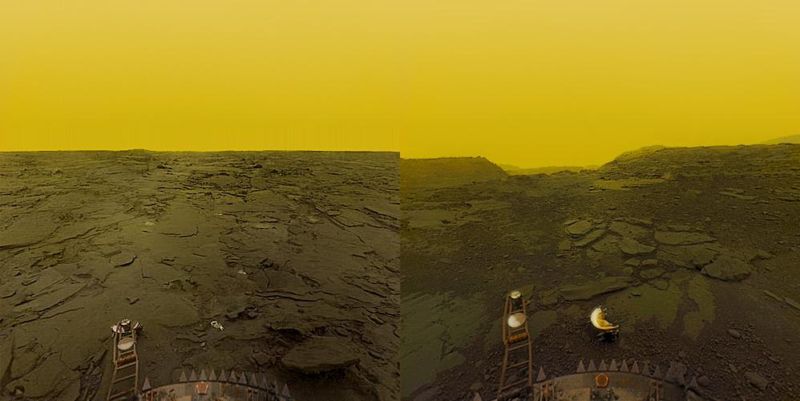Ever wonder why everyone’s fascinated with going to Mars but rarely have much to say about Venus, the brightest “star” in the night sky? Well, if you know anything about the second planet from the sun, you’re aware it’s our solar system’s version of hell. If you somehow managed to survive its surface temperature of 470°C and bubbling acid, you’d be crushed under the pressure of 90 atmospheres. So, realistically, you wouldn’t make it out alive, and neither could a computer, but that might not hold true much longer (for computers, not humans — do not attempt to go to Venus, ever).
At a basic level, computers work by channeling electrons through paths etched in silicon. They follow those predefined paths because moving along those paths requires less energy. If a computer was on the surface of Venus, the electrons would have so much energy that they could jump paths at will, which would break the flow of electricity, and the computer.

Image source: NASA.
The longest survival time for a human-made object on Venus was 127 minutes in 1981, when the Soviet spacecraft Venera 13 landed there. Not dying for two hours and netting the first color photos of the planet’s surface was a huge success, especially since the probe was designed to live for just 32 minutes before it was cooked, crushed, and dissolved by its environs. Three more Soviet spacecraft followed this path, but humans haven’t tried to land anything on Venus since 1985.
One of the hugest issues with exploring Venus is that normal digital computers don’t really work there. Standard silicon chips can hang in around 250°C, but eventually there’s too much energy in the system that the silicon stops being a semiconductor — since the electrons can freely jump the bandgap — and everything stops working.
Fortunately, electronics based on the semiconductor silicon carbide (SiC) have started to mature over the last few years. SiC has attracted interest from the military and heavy industries because it can support very high voltages and temperatures. These properties make it a very suitable candidate for computing on Venus, too.
Researchers at NASA’s Glenn Research Center appear to have cracked another big problem with high-temperature integrated circuits. They’ve crafted interconnects — the small wires that connect transistors and other integrated components together — that can survive the extreme conditions on Venus.
The researchers then combined the new interconnects with SiC transistors to create a ceramic-packaged chip. The chip was then placed into the GEER — the Glenn Extreme Environments Rig, a machine that can maintain Venus-like temperature and pressure for hundreds of hours at a time. The chip, a simple 3-stage oscillator, functioned at a steady 1.26 MHz for 521 hours (21.7 days) before the GEER needed to be shut down.
According to NASA Glenn, this is the first reported demonstration of a computer chip operating in Venus-like conditions for multiple weeks without the aid of a pressure vessel, cooling system, or other means of protection.
Source: Ars Technica
Advertisement
Learn more about Electronic Products Magazine





